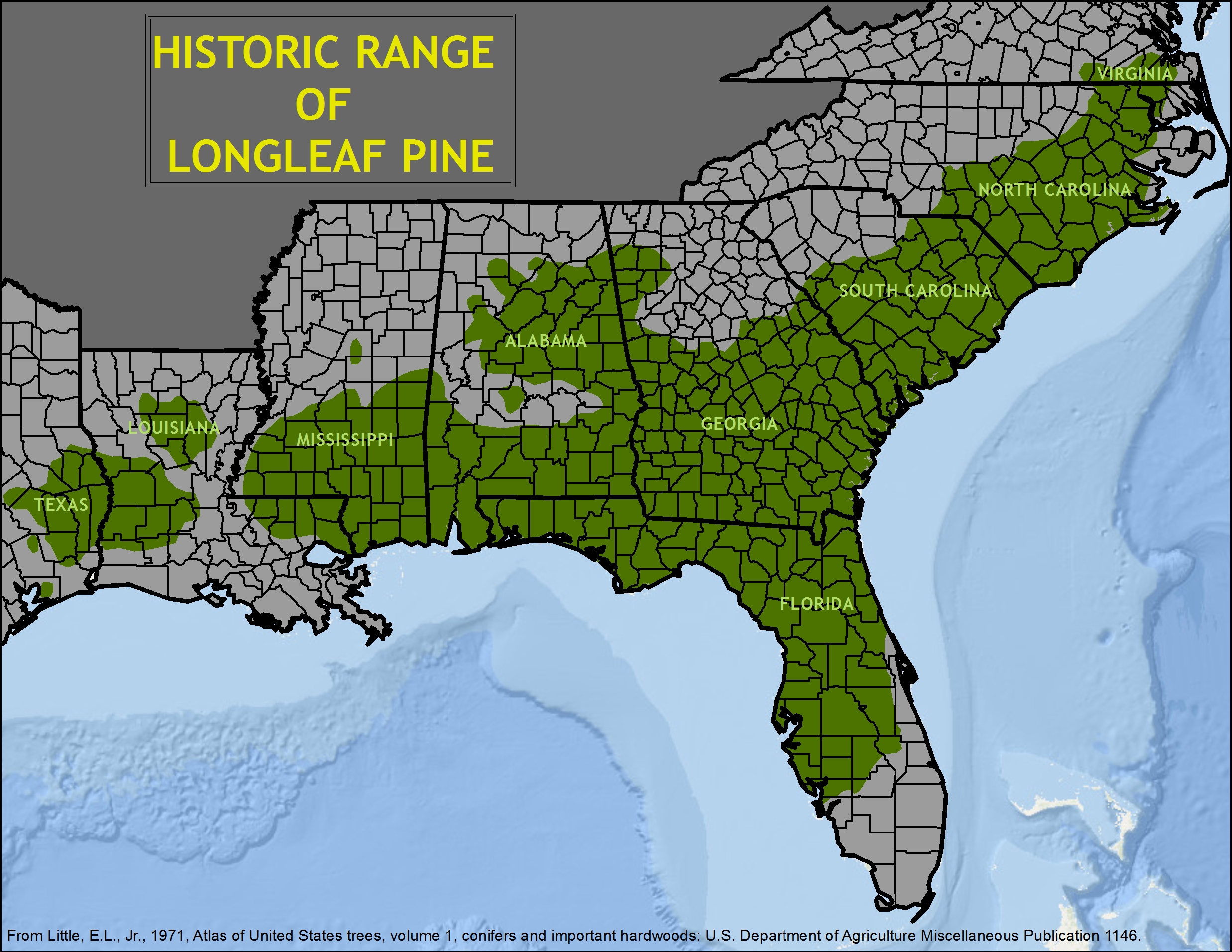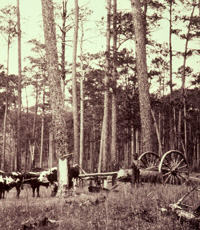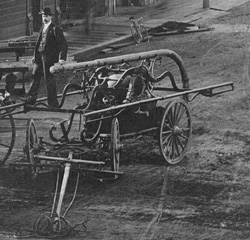![Image Courtesy of By Boston Public Library [CC BY 2.0 (http://creativecommons.org/licenses/by/2.0), Public domain or Public domain], via Wikimedia Commons Historical photo
of Naval Stores Courtesy of By Boston Public Library [CC BY 2.0 (http://creativecommons.org/licenses/by/2.0), Public domain or Public domain], via Wikimedia Commons](img/navalStoresIllustration.jpg)
Longleaf History
Longleaf pine forests once occupied over 90 million acres in the South. By the late 1990s, roughly three million acres remained, with many of the remaining acres in an unhealthy state due to the exclusion of fire.

“We find ourselves on the entrance of a vast plain which extends west sixty or seventy miles…. This plain is mostly a forest of the great long-leaved pine, the earth covered with grass, interspersed with an infinite variety of herbaceous plants, and embellished with extensive savannas, always green, sparkling with ponds of water….”
William Bartram, 1791, Travels through North and South Carolina, Georgia,…
Naval Stores

The longleaf ecosystem figured prominently in the cultural and economic development of the South. Longleaf pine (Pinus palustris) historically was the ‘king’ of the southeastern coastal plain forest. Longleaf pine’s abundant supply of pine sap (resin) led to the economic development of the southern forests for the production of “naval stores.” The raw pine resin was collected from the trees, distilled and then processed into glue, turpentine, rosins, and other by-products that were necessary for the shipbuilding industry in the 19th and early 20th-century. The advent of petroleum based distillates in the mid-1900’s, along with the damaging effects of the pine sap collection process and the transition away from water transportation all put an end to the naval stores industry.
Learn More: Naval Stores and Longleaf Pine from LEARN NC
Naval stores: A history of an early industry created from the South's forests

Fire Suppression
In the early 1900s after a series of devastating forest wildfires, the U.S. Forest Service adopted a policy of total fire suppression with the goal of preventing fires and suppressing fire as quickly as possible. At this time foresters had limited understanding of the ecological role of fire even as ranchers, farmers, and timbermen had used it for years to improve land conditions. This lack of knowledge of longleaf pine ecology caused forest managers to turn to other pine species, such as loblolly, that were easier to manage. The lack of longleaf management by forest managers and the long-suppression of natural fire regimes caused widespread change to the composition and structure of North Carolina’s forests.
What Remained
In 1932, North Carolina ecologist B.W. Wells stated of the longleaf forest, “Not a part of this great natural wonder worthy of the name forest remains intact within the state’s borders. It has been rooted out by hogs, mutilated by turpentining, cut down in lumbering, or burned up through negligence.” By the 1990s, what remained of natural longleaf stands mostly occurred in areas too wet or too dry for agriculture (Peet 2006, Frost 1993, Harper 1906, Mohr 1901, Ashe 1897). The fire-suppressed communities that replaced longleaf ecosystems are increasingly vulnerable to destruction by catastrophic wildfires.
Restoration
Restoring periodic prescribed fire is fundamental to the ecological restoration and maintenance of many forest communities, especially longleaf pine ecosystems. Today, restored longleaf forests and landscapes represent significant components of North Carolina’s ecological diversity. However, we still face real threats to the recovery of longleaf forests, including the disproportionate use of loblolly pine for timber management, conversion of forests to non-forest uses such as agriculture or development, and the difficultly of using prescribed fire in increasingly fragmented and urbanized landscape.